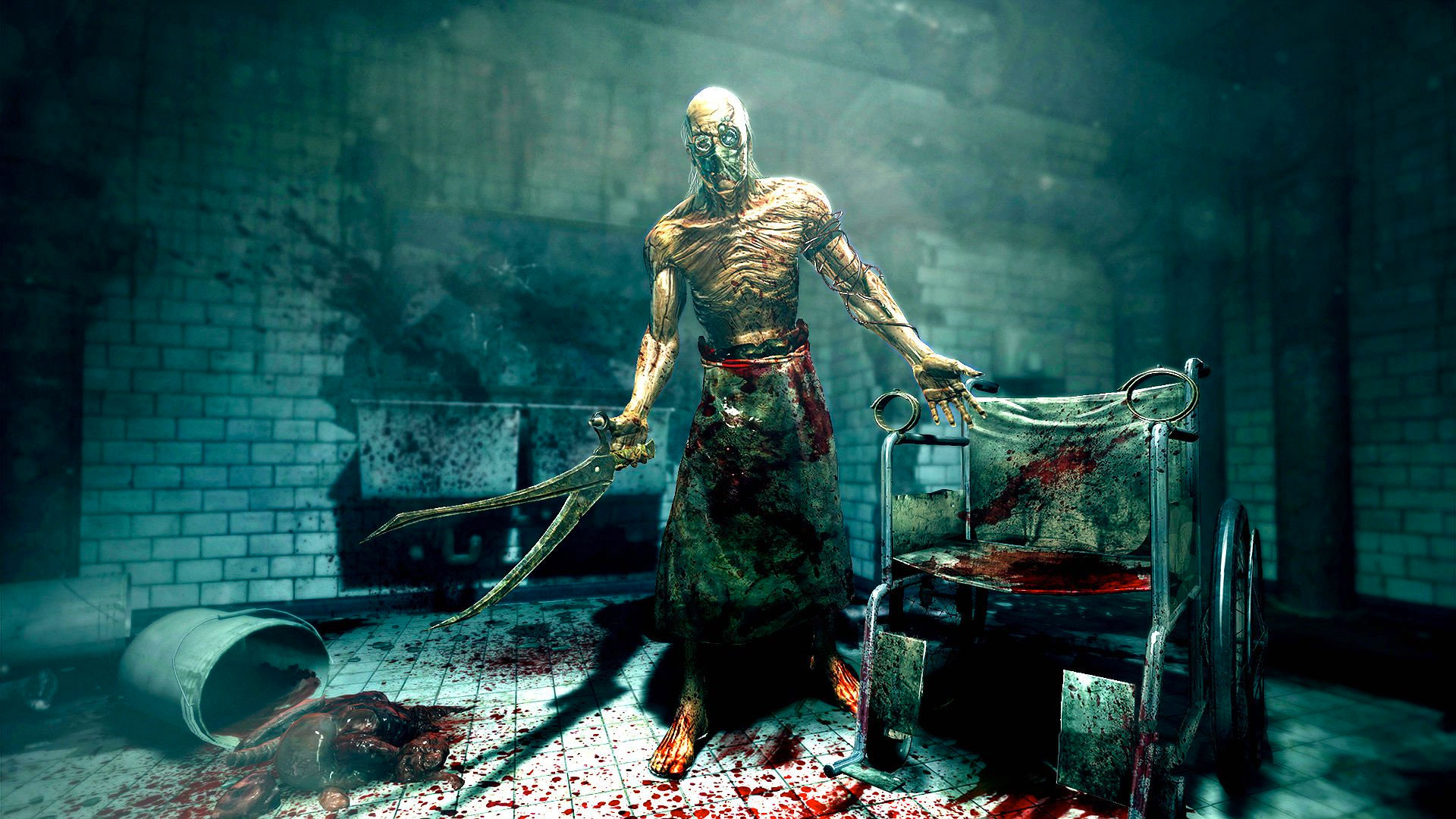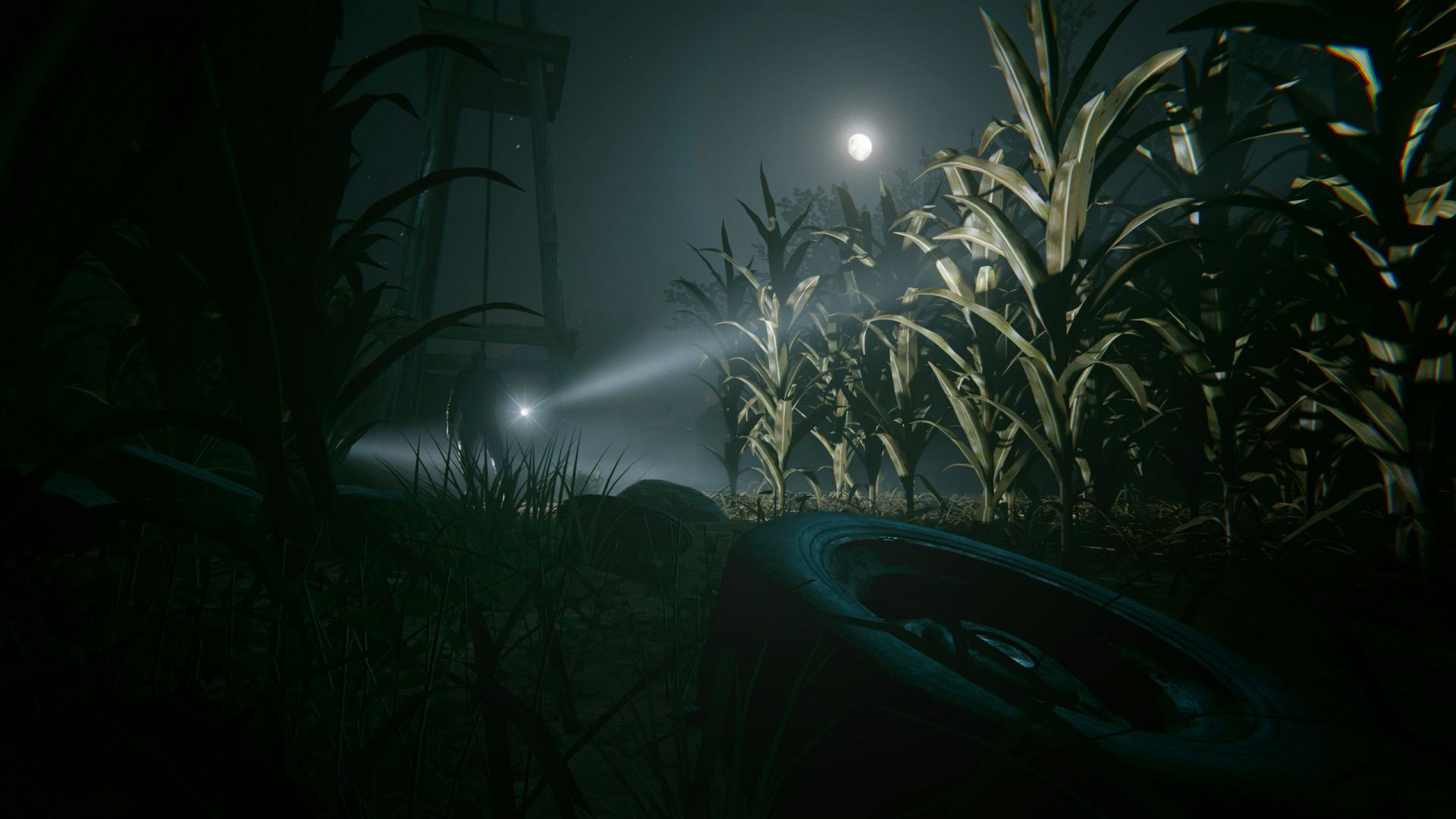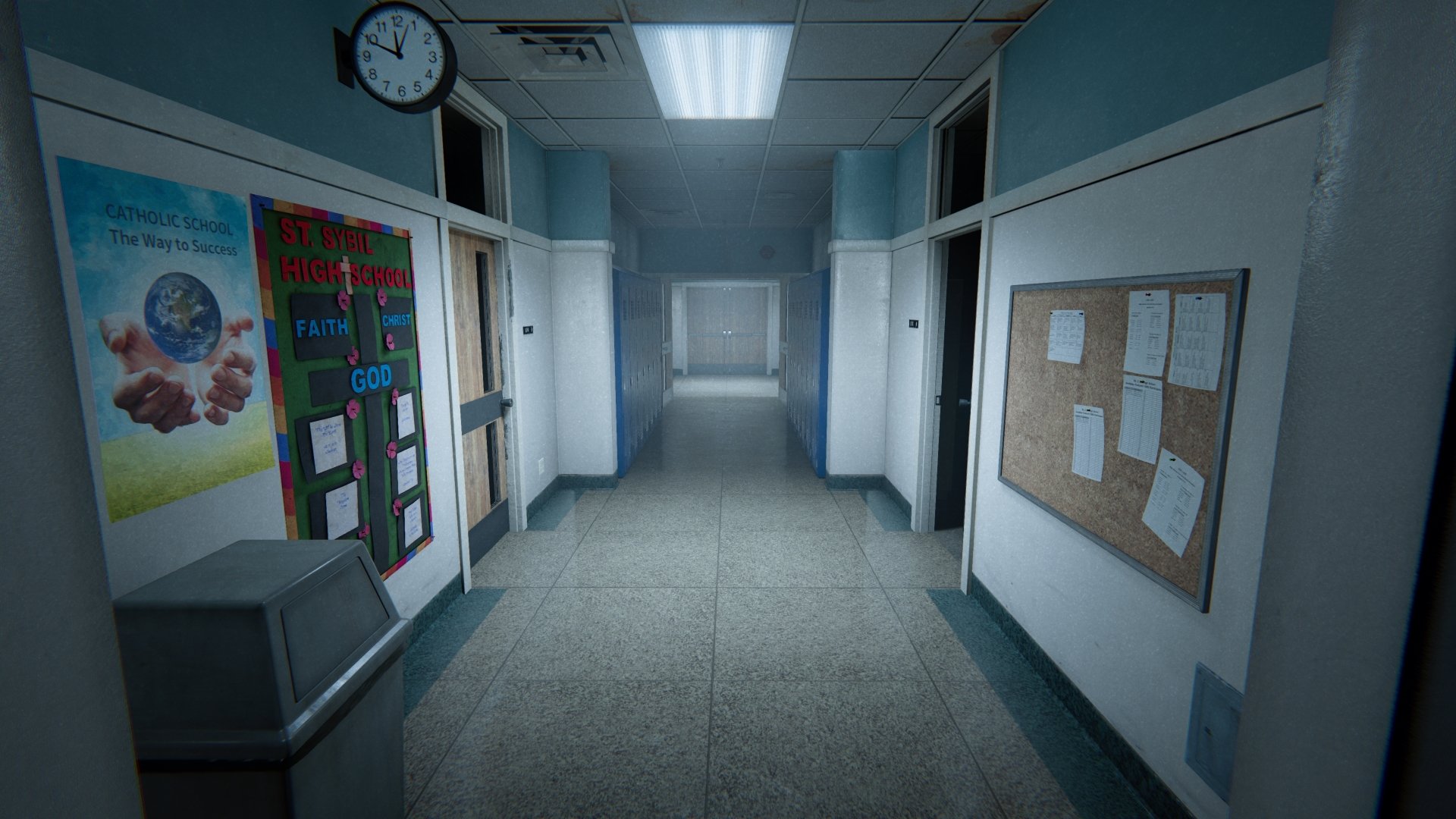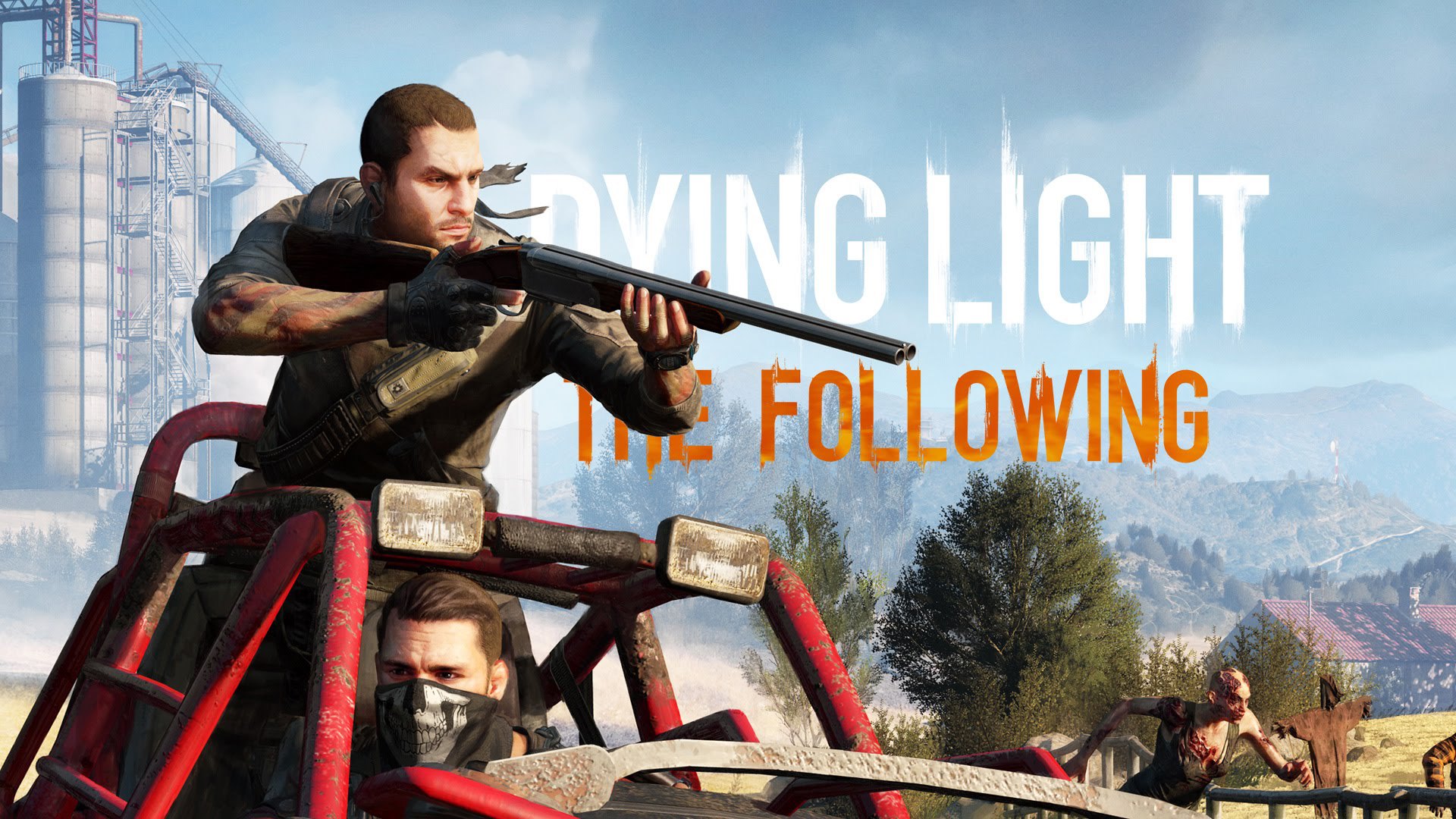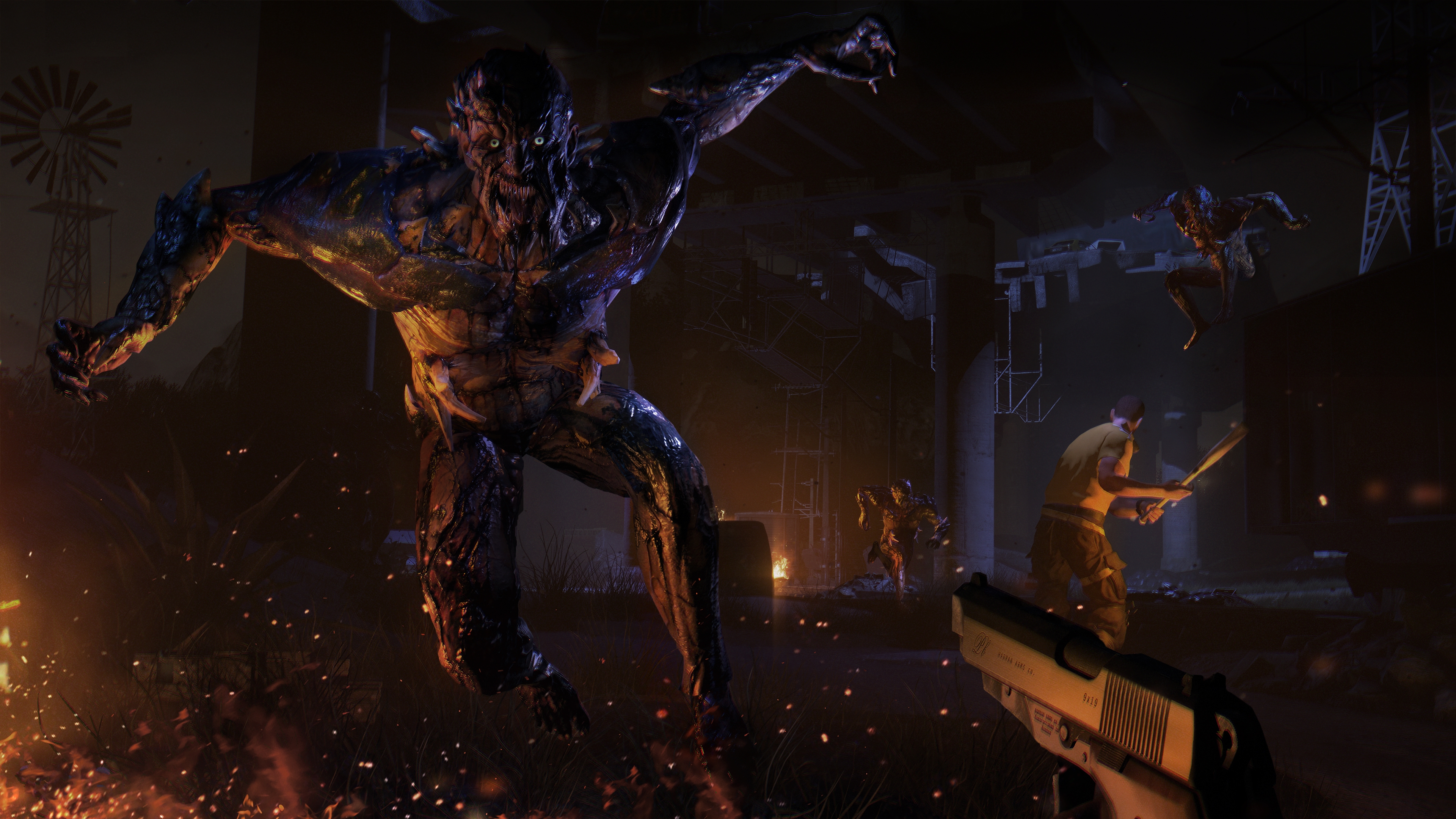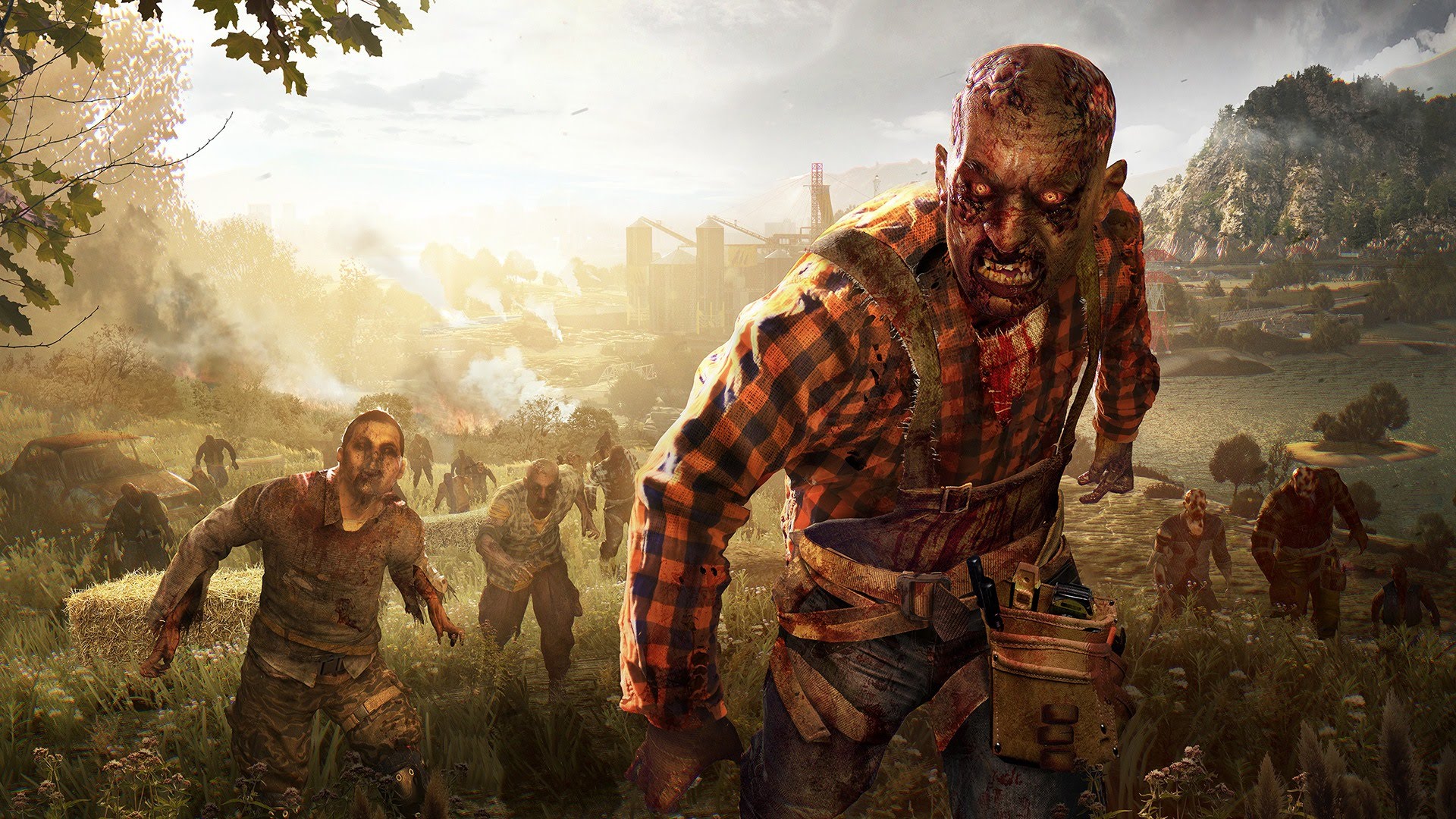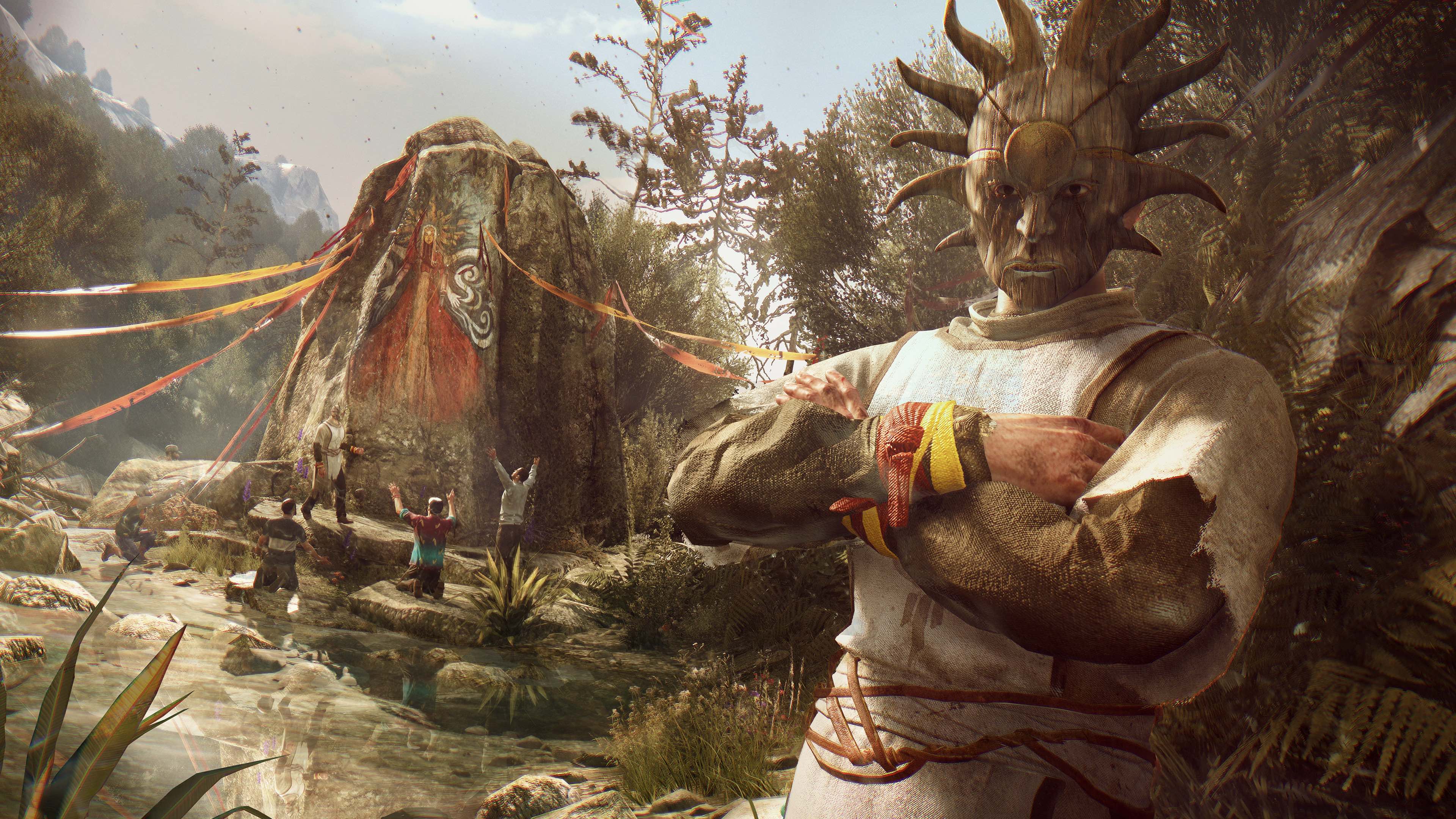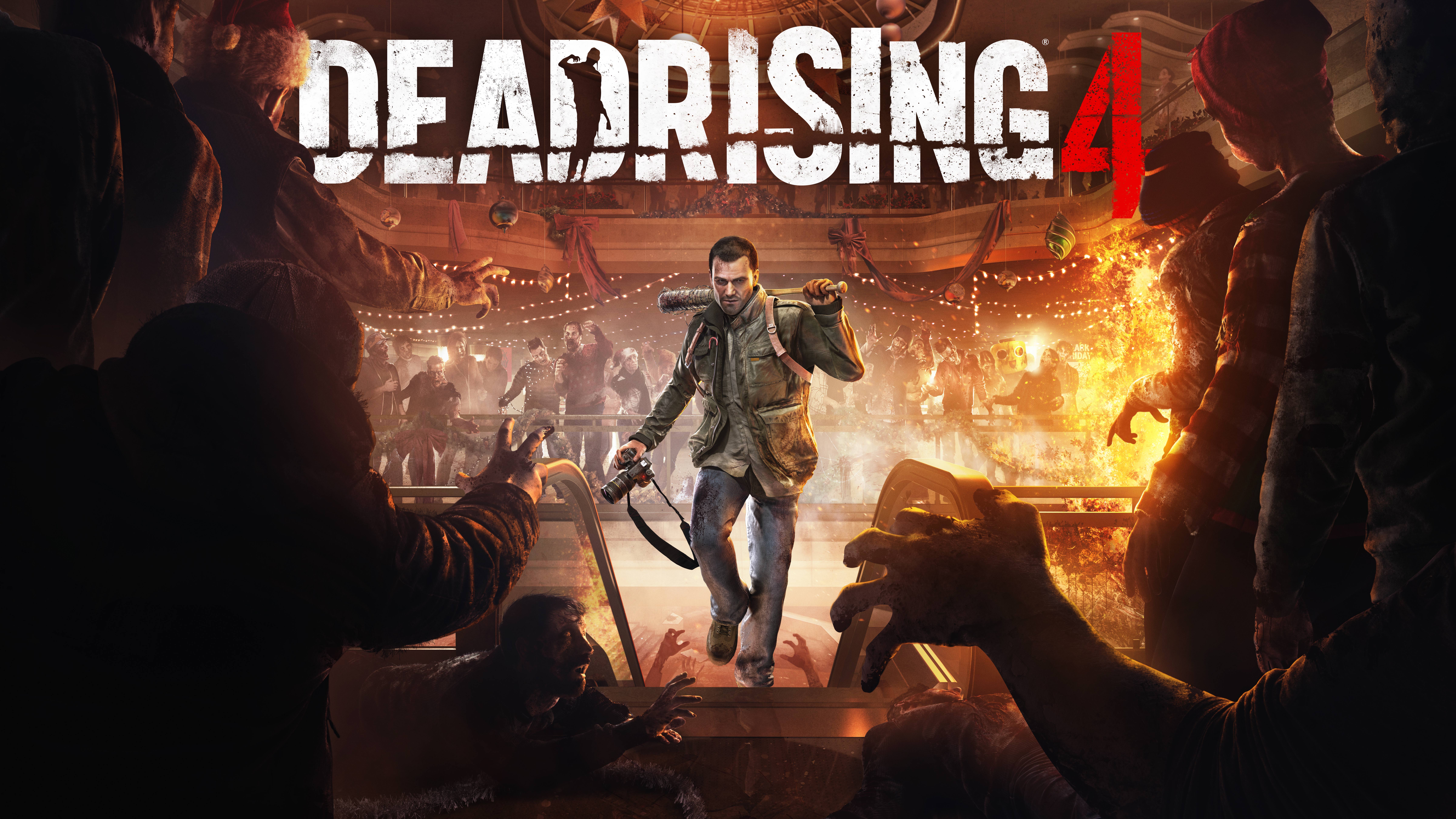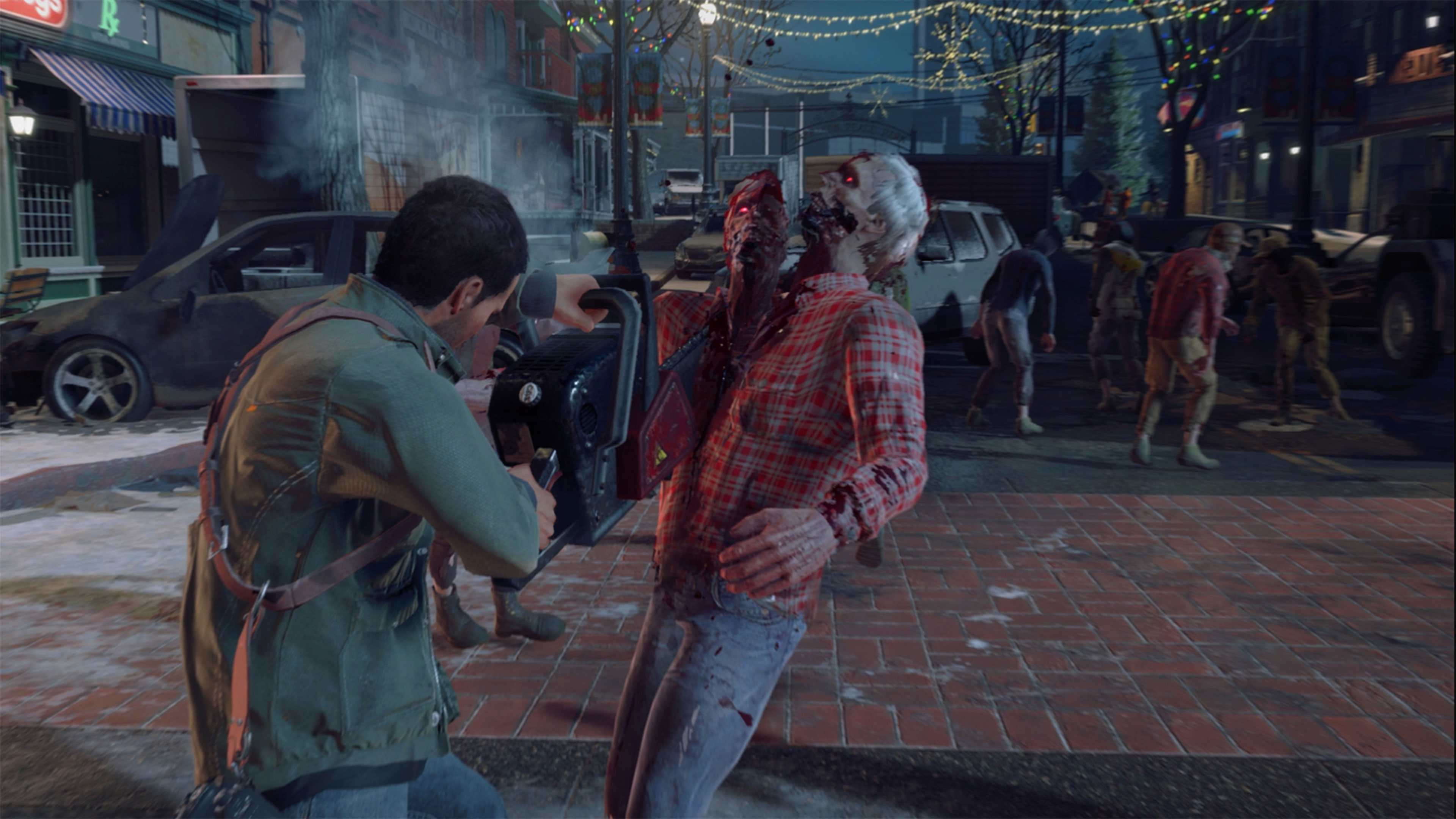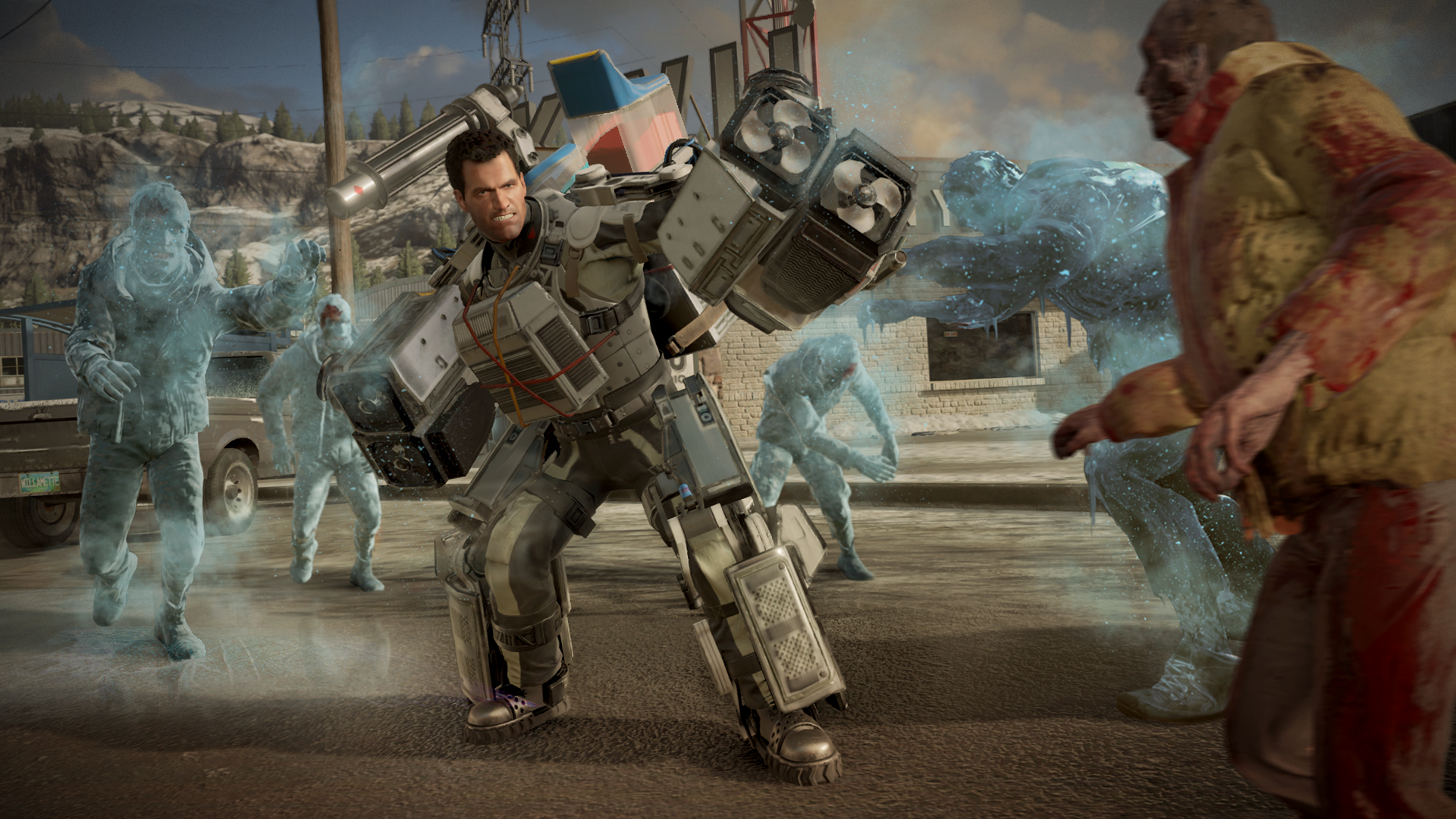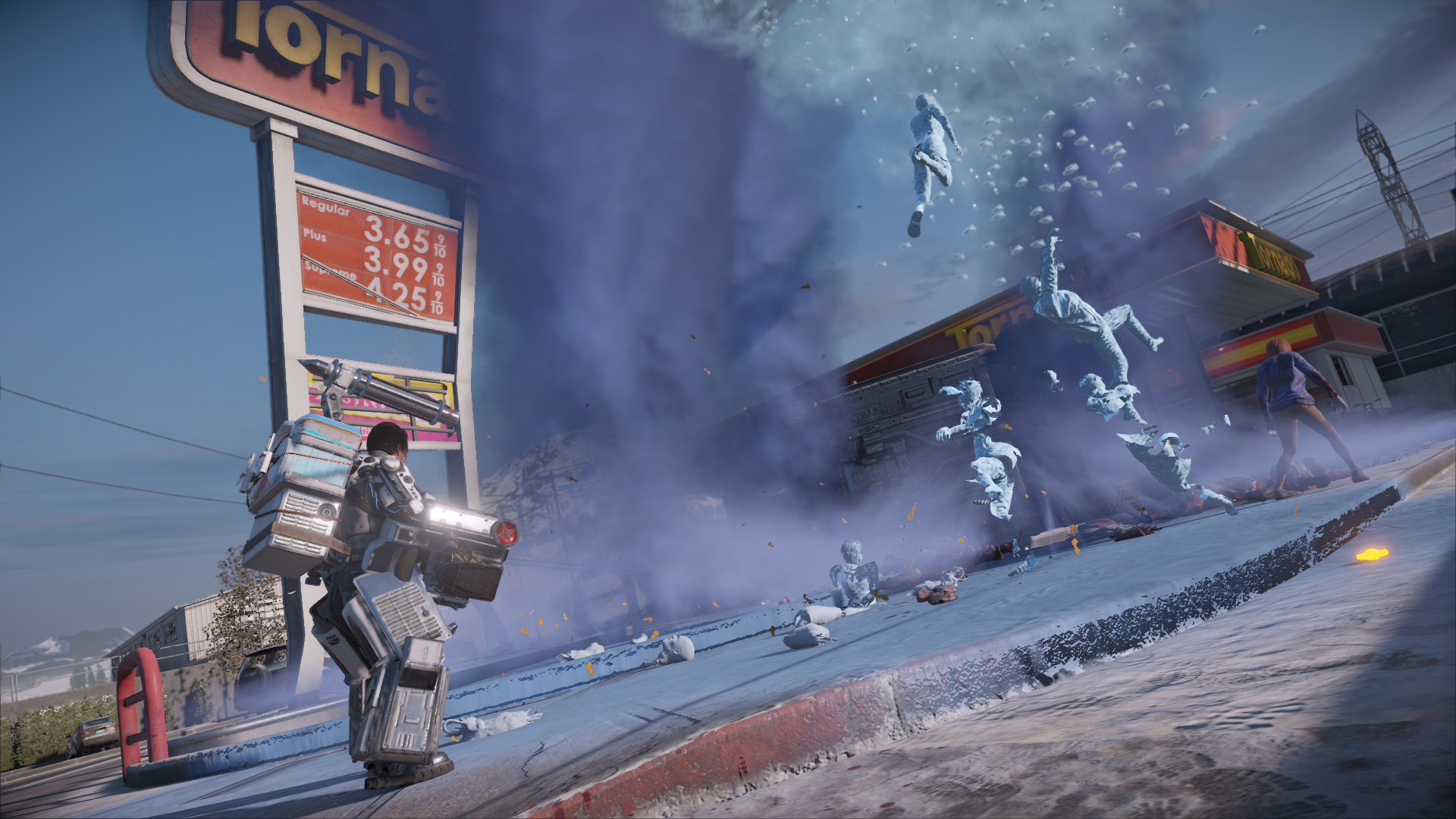PC Game Reviews
Here you can find the latest pc game reviews.
Son Goku • 1 day ago
Atmosphere, graphics, sound effects, and gameplay is the best !!!
Son Gohan • 1 hour ago
It's not a bad game, but I've been very disappointed by the fact that they changed the game from a mix of esplorative-ish/puzzle-ish/stealth-ish to a hardcore stealth; you will spend all the time either hiding or running away.
Game Info:
Summary: Outlast 2 introduces you to Sullivan Knoth and his followers, who left our wicked world behind to give birth to Temple Gate, a town, deep in the wilderness and hidden from civilization. Knoth and his flock are preparing for the tribulations of the end of times and you’re right in the thick of it.
Developer: Red Barrels
Genre(s): Action Adventure, Survival
Cheats: GameFAQs
What if the most deranged, doom-saying cultists are right? Outlast 2 prods this question with a pointy stick until it bleeds, festers, and wails in agony. While it plays very similarly to the original, Outlast 2 takes its Christian themes into extremely uncomfortable and surprising territory, avoiding what could have been a familiar trek through cultish cliches.
Structurally, it’s a conventional first-person horror game, a string of tense stealth scenarios where you hide from monsters before they chase you through dense forests and flooded mines. The story is too opaque and a maddening amount of trial-and-error is needed to figure out most of the stealth sequences, but through it all, Outlast 2 is a train of depravity steered by a good old-fashioned fear of God.
Lorem ipsum dolor sit amet, consectetur adipisicing elit, sed do eiusmod tempor incididunt ut labore et dolore magna aliqua. Ut enim ad minim veniam, quis nostrud exercitation ullamco laboris nisi ut aliquip ex ea commodo consequat. Duis aute irure dolor in reprehenderit in voluptate velit esse cillum dolore eu fugiat nulla pariatur. Excepteur sint occaecat cupidatat non proident, sunt in culpa qui officia deserunt mollit anim id est laborum.
Picture this
As a freelance journalist, you’re investigating the disappearance of a Jane Doe. Your wife is quickly kidnapped by a cult, the genesis of which is fascinating, mostly told through discarded letters and environmental cues. But the details are hard to process when an entire village is actively hunting for you. Outlast 2 maintains such a relentless pace that there’s almost no time to figure out what’s really going on.
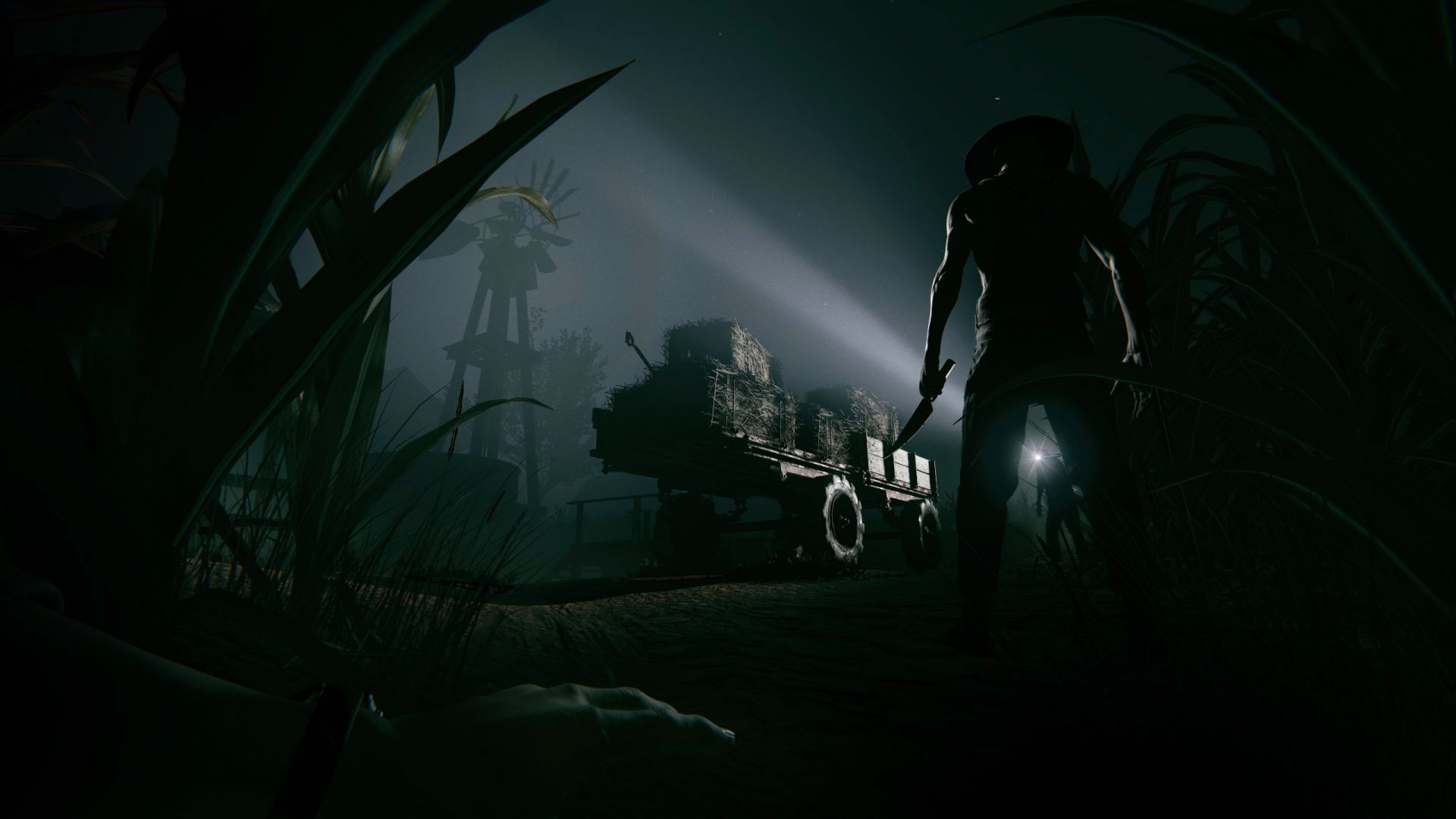
Besides the vague story and some directed flashback sequences that feel like a detour, the slow progression through rural Arizona is layered with enough apocalyptic Christian imagery to be a complete journey. Expect to witness the best of the worst of the bible through some of the most shocking first-person scenes in games, period. Your vision flashes red with hard clank of a hammer coming down on metal, the sky is a dark shade of purple, and a man piggybacking on another man blathers on about how happy he is to see you.
On that journey, you’ll need to sneak past roving packs of rural folks gone mad. Your camcorder is your only tool, used to see in the dark with its night vision mode and a microphone that detects sound wherever it’s pointed. Both functions drain your batteries and like healing bandages, they’re limited, but never so much that you’re left without enough supplies to outwit any pursuers. Even without wit, persistence does the trick, as frustrating as it can be.
Immoral compass
Early on, I wandered the same cornfield for 30 minutes, crawling the perimeter and making several suicide runs to scope out the buildings for an exit. The way out was a short sprint not far from where the sequence begins, a quick hop over a pile of wood pallets piled next to the fence. The area was a wild goose chase killbox, built only to confuse. It’s not an isolated issue either. While the original Outlast could depend on the hospital’s architectural pathways to direct the player, pulling off subtle signposting in an outdoor setting can’t be as obvious without compromising the feeling of being lost and helpless. Red Barrels’ commitment to building such a disorienting horror simulation is as admirable as it is annoying.
Such dedication can be worth it. Subtle lighting casts trees and figures like paper silhouettes against muted backdrops, and convincing effects like the camera’s depth of field and visual noise make the world look real at a glance. It’s stunning artistic and graphical work. And when you’re dashing through it, nearly out of battery while a ‘man’ screams biblical verse and shoots fiery crossbow bolts past your head it’s both thrilling and nauseating, all propped up by an incredible soundtrack.
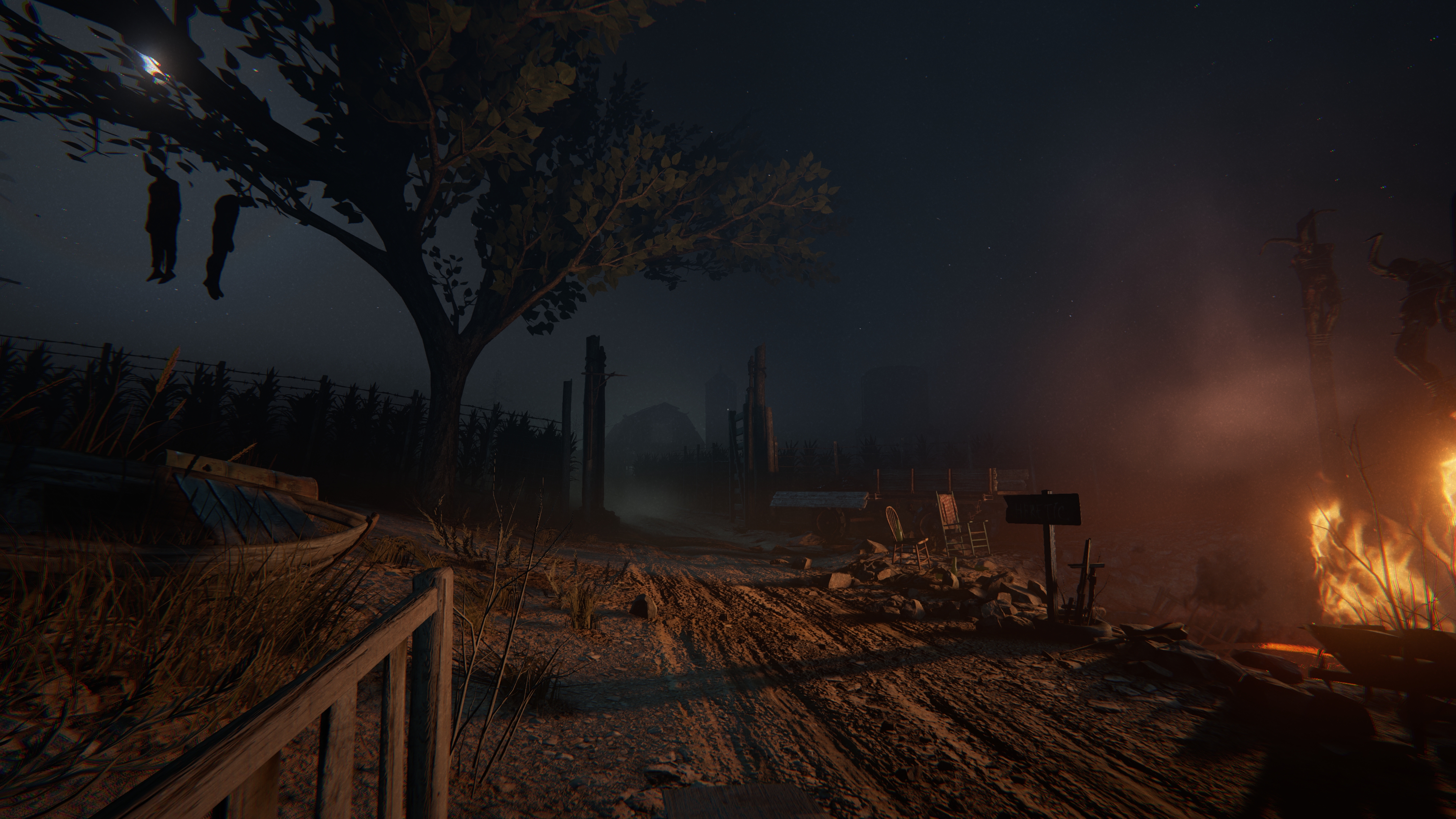
But it’s a tower that topples often, leading to repeated attempts at trying to find a tiny hole in a huge fence, to figure out if the enemy can see me or not, or if I can grab a particular ledge to scramble away in time. There are even a few instances where enemies are set up to ambush and instantly kill you, totally deflating a close getaway. Without clear rules the illusion fades quickly, exposing the simple AI and restricted level design. The few times I happened to stumble the right way through a level, Outlast 2 felt like an audiovisual horror masterpiece. The motion capture, textures, and animation are never quite up to par with Resident Evil 7, but when everything meshes together, it hardly matters. Just don’t expect a smooth experience the whole way through. When it clicks though—those moments stick.
Long after the final minutes of Outlast 2, I felt queasy, uncertain that what I saw had actually happened. It’s one of the most bizarre ending sequences I’ve witnessed, tapping into a fear I’ve known since my first week at Sunday school. It's not a fear about being hunted, artistic viscera spills, or neatly arranged corpses on spikes (though there’s plenty of that stuff). It’s fear of the drastic measures people will take to ensure their salvation, the burden of guilt, and whether or not the big guy up top exists and gives a damn.
What I like most about Outlast 2 is that it doesn't just use its themes as set-dressing. The first Outlast had the same intense stealth sequences and chase scenes, but in the spooky asylum every Early Access game goes for. Outlast 2 takes you through dilapidating farms and flooded mines and old townships that all say something about the history of the people who lived there. It rains blood and spews locusts and sends twisted cultists after you through it all, just regular people wearing overalls and carrying bloody steak knives, moaning in apocalyptic overtones. There are monsters, sure, but Outlast 2's scariest moments come from its most familiar faces.
Trunks • 1 day ago
Atmosphere, graphics, sound effects, and gameplay is the best !!!
Vegeta • 1 hour ago
It's not a bad game, but I've been very disappointed by the fact that they changed the game from a mix of esplorative-ish/puzzle-ish/stealth-ish to a hardcore stealth; you will spend all the time either hiding or running away.
Game Info:
Summary: Dying Light: The Following is a significant expansion to Dying Light and the untold chapter of Kyle Crane’s story. Take to a vast new area that will transform your Dying Light experience through new game mechanics, environments and challenges on top of the established core of the game.
Developer: Techland
Genre(s): Action Adventure, Survival
Cheats: GameFAQs
I didn’t exactly love free-running zombie FPS Dying Light—I thought it was good, not great—and having logged some 40 hours of dashing, clambering, climbing, and bludgeoning, I needed a change of pace to energize my return. Techland has delivered one with its meaty, speedy expansion, The Following, which moves the undead terror from the city to the countryside and puts you behind the wheel of a rusty, ramshackle, zombie-smashing car. Am I happier peering ahead at a lurching crowd of zombies and not planning to sneak around them but instead to drive directly through them? Yes.
Once again you inhabit the boots of Kyle “I’m Just Trying To Help” Crane, the boringly earnest do-gooder now investigating rumors that a shadowy cult has gained immunity from the zombie virus. Hoping to bring this cure back to the city, which has run low on antizen, Kyle clambers his way out of Harran and into the outlying farming community. There he must investigate a mystical, masked society and uncover the secret of their zombie-stopping powers, mostly by running errands for the distrustful members of a town struggling to survive (but not struggling /that/ hard because they won’t do anything for themselves).
Your gutsy little car isn’t just for getting around the massive map, it’s your primary weapon and it comes with an entirely new skill tree. XP dribbles in slowly but steadily as long as you’re behind the wheel, and you’ll eventually be able to turn your buggy into a high-speed deathtrap, adding nitro boosts, an electrified cage, ramming bumpers, and UV headlights to keep the nighttime zeds at bay. My personal favorite: landmines you can drop as you speed along. I found them useful for shaking Virals, the lightning-fast enemies who’ll chase you doggedly down the country roads for miles, latch onto your car, and annoyingly punch you in the face through your windowless windshield until you scrape them off against a tree or a fence.
Pedal to the Deadal
The driving itself is pretty tricky and somewhat clunky—for a while. For the first few hours the roads feel far too cluttered with disabled vehicles, barricades, pools of toxic sludge that can kill you in an instant, puddles of water that send you skidding, and other hazards, all which slow you down and makes traveling a somewhat plodding experience. As I began to learn the roads, though, it became more fun and satisfying, crossing clogged bridges, jumping ramps, and traveling over great swaths of the map without slamming to a halt. Smashing through zombies doesn’t feel quite as enjoyable as it should—they fall apart more than get thrown entertainingly through the air, but it still beats the alternative of wading through them on foot.
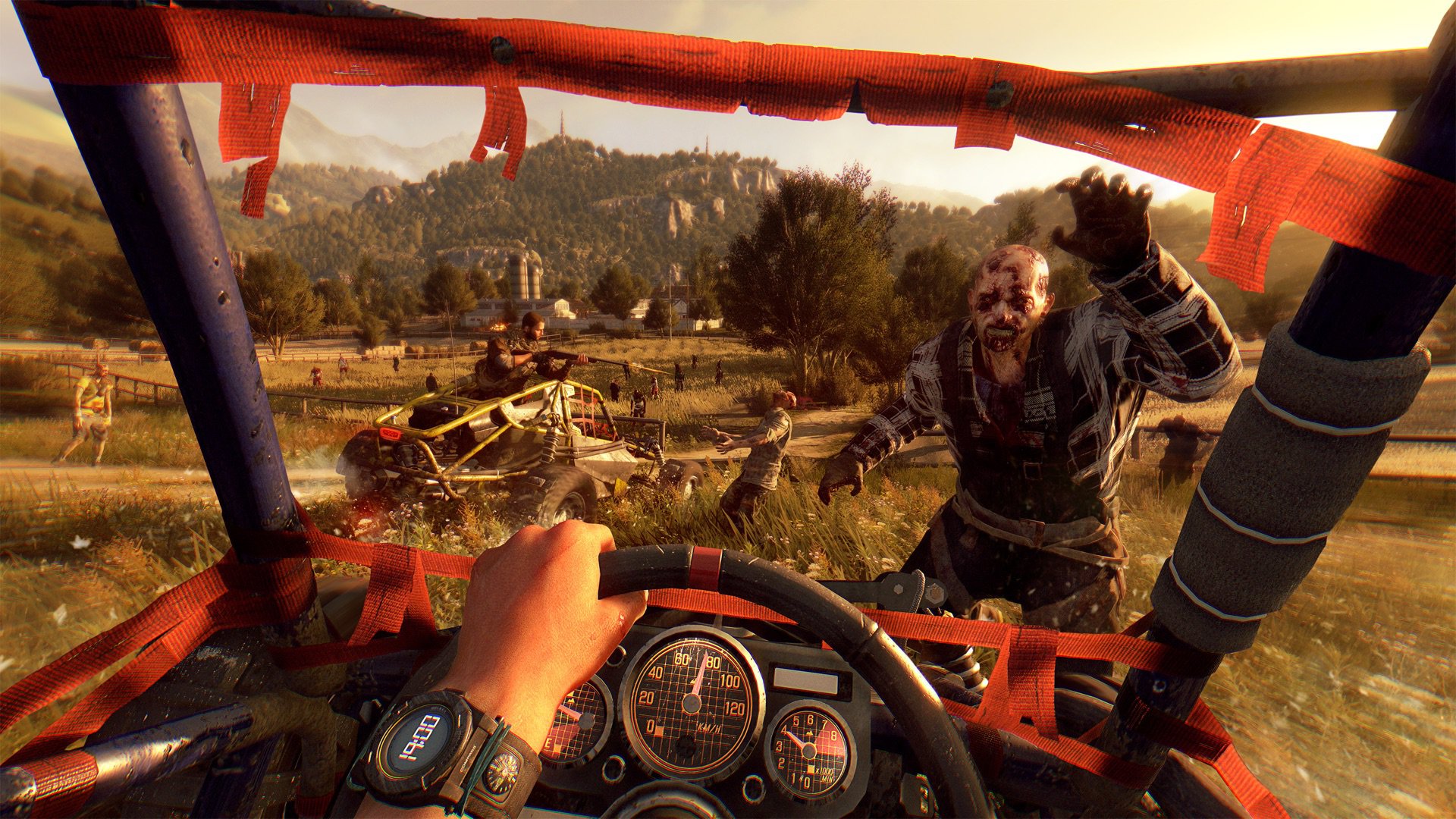
The buggy also requires a lot of attention. Ramming zombies from dawn to dusk means you’ll need to stop regularly to repair your ride, and repairs require materials scrounged from other vehicles. You’ll also have to stop at gas stations every now and then for a fill-up. This mostly works okay: it can be fun and nerve-wracking, scrounging for materials and gas with a horde bearing down on you and the sun hanging distressingly low in the sky. At other times, it can be a be a bit of nuisance to have to fix your whip for the umpteenth time when you’d rather just be getting on with a mission. It never felt downright irritating, though, and as you replace some parts and upgrade your car-based skills, it becomes vastly more reliable.
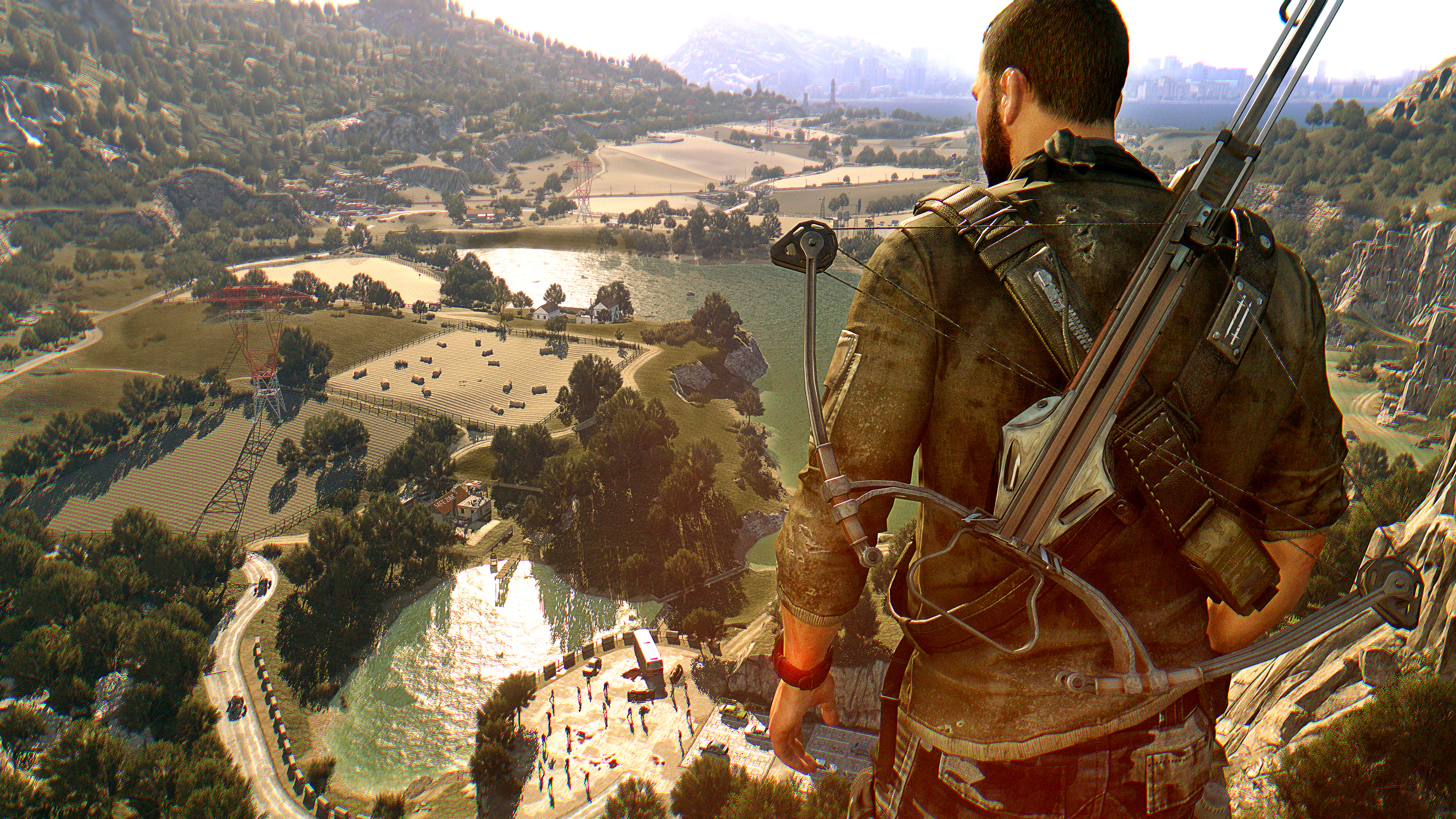
Infiltrating the cult and gaining the trust of the townies will take you and your buggy from one end of the sprawling map to the other and back. Electrical power must be restored (naturally), a water pipeline must be repaired (of course), items must be retrieved and various missing persons must be located. In true side-quest format these missions are rarely as straightforward as they sound, leading to some extended adventures, a few enjoyable twists, and this one asshole who spent his time during the apocalypse first hiding his cache of weapons and then writing rhyming poems about where you can find them. Screw that guy.
As you speed off over piles of zombies to complete these tasks you’ll run across an almost exhausting number of other encounters and adventures: locations to explore, people radioing for help, airdrops to recover from armed goons, timed challenge modes, geotagged military caches to track down, and caves filled with dangerous Volatiles to clear out—or not clear out. Look, don’t clear them out. It’s really, really awful in there. Some of these encounters feel like filler, hardly worth stopping for, but I’ll never not enjoy following a rapidly beeping transmitter to its source. Anything that yields new blueprints or weapon attachments is time well spent.
There’s a lot to do in The Following, and I wound up enjoying it more than the original game. Much of my issue with Dying Light had to do with the long, slow grind to improve Kyle’s skills to the point where he was actually fun to play. Here, the progress with the car feels faster and becomes enjoyable much more quickly. Steam annoyingly didn’t track the time I spent on my review copy, but I’d estimate there’s a good 10-20 hours of fresh adventures to be had, and many more for completionists. And, while definitely focusing on car-based hijinks, there are still plenty of opportunities for climbing and running and bludgeoning for those who didn’t get enough of that in the base game. The new characters and story are, unfortunately, just as dull as they were in the original, though I feel they’re both a bit quicker to get to the point.
The Following is meant for players who have already maxed their skill trees in the base game, evident in the fact that boss zombies aren’t just encountered at the climax of missions: there are plenty of them just wandering around trying to fit in with the crowd now. There are also Freaks of Nature: ultra-bosses, designed to be taken down with a co-op partner, so ridiculously swollen with hit points that it took me, playing solo, a good 10 minutes to kill one, most of that time spent crouching fearfully on a rooftop and using my entire collection of crafting components to build explosives.
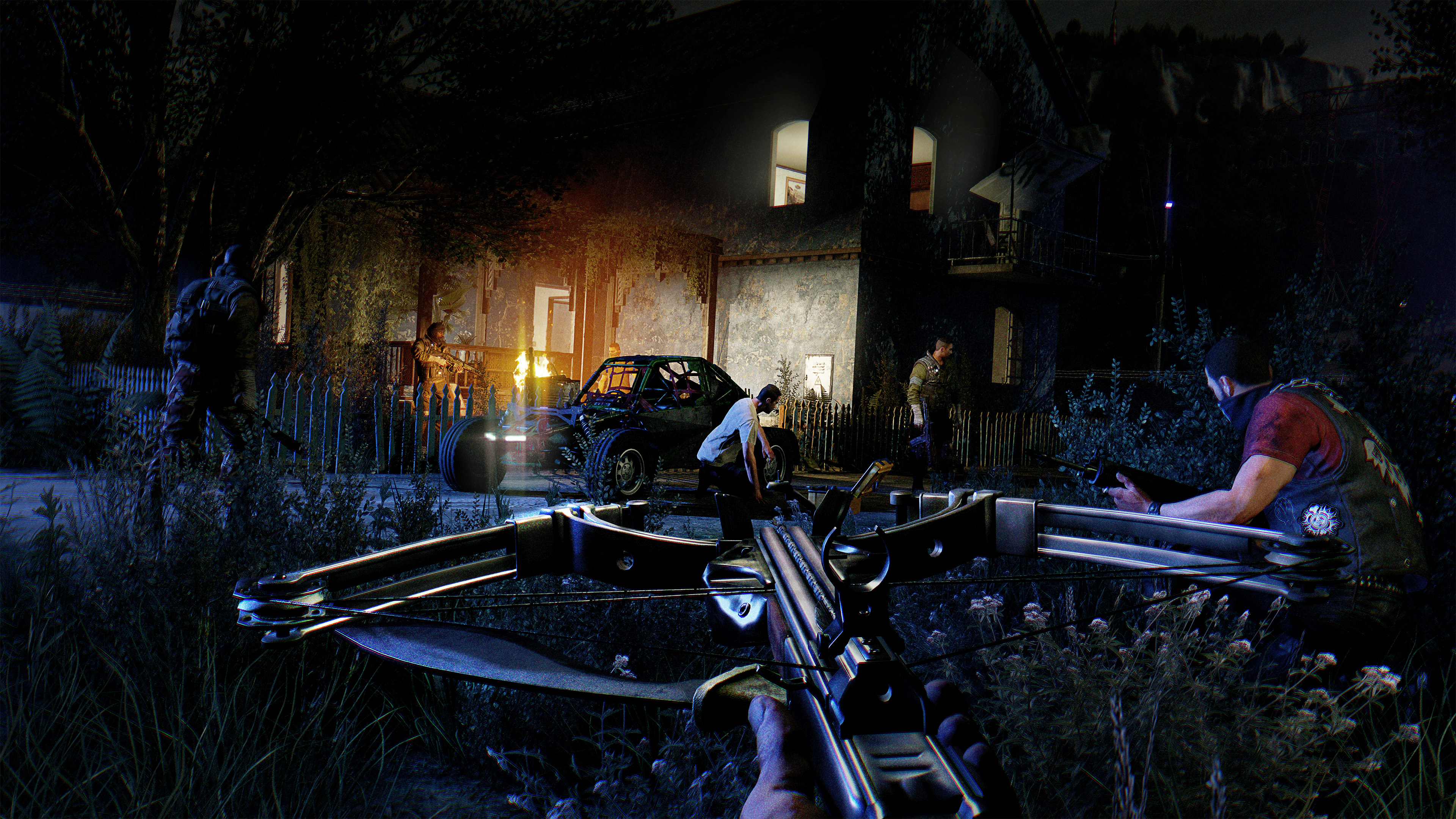
The expansion ran great for me: I didn’t experience a single crash (PC crash, that is: I crashed my buggy plenty). The issues I had were minor, like, while racing at top speed I sometimes overtook the spawn rate of new zombies, meaning I could see them pop into existence in front of me. Enemy AI didn’t work well in a few cases: boss enemies unwilling to walk around a minor obstruction, considerately letting me slowly plink them to death at my leisure, and some human goons who wouldn’t open fire if I backpedaled a few steps. Not complaining, really, it made a few fights a lot easier.
Otherwise, I think Techland did a good job of turning its running game into a driving game, and didn’t skimp on the extras. It’s a substantial expansion, it deviates nicely from the original, and it’s a reasonable price for its weight.
Son Goku • 1 day ago
Atmosphere, graphics, sound effects, and gameplay is the best !!!
Son Gohan • 1 hour ago
It's not a bad game, but I've been very disappointed by the fact that they changed the game from a mix of esplorative-ish/puzzle-ish/stealth-ish to a hardcore stealth; you will spend all the time either hiding or running away.
Game Info:
Summary: This is the holiday season in Willamette, Colorado. A mysterious outbreak has overrun the Willamette Memorial Megaplex Mall and surrounding town with dangerous and deadly predators. Join Frank West as you explore a vast, open world sandbox filled with dangerous new zombies and a myriad ways to kill them as you seek to uncover the truth behind the outbreak - or die trying.
Developer: Capcom, Capcom Vancouver
Genre(s): Action Adventure, Open-World
Cheats: GameFAQs
Since its debut a decade ago, Dead Rising has continuously evolved with each new game. It's changed settings and protagonists, added crafting and vehicles, abandoned escort missions and limited saves. In spite of all these changes, however, the core gameplay always remained intact: grab whatever's handy to kill and maim droves of zombies in a huge variety of gruesome, hilarious ways. Dead Rising 4 maintains this tradition of superficial yet entertaining mayhem by adapting ideas from every previous iteration.
Intrepid photojournalist Frank West, for example, finally returns as our playable protagonist. We also revisit Willamette, Colorado, which has been completely rebuilt since the original outbreak many years prior. Tragically, it's once again the epicenter of an undead pandemic, only now its citizens are supposed to be inoculated. This raises a lot of questions for Frank and his rebellious protege Vick Chu, both of whom fight to uncover the truth in their own ways.
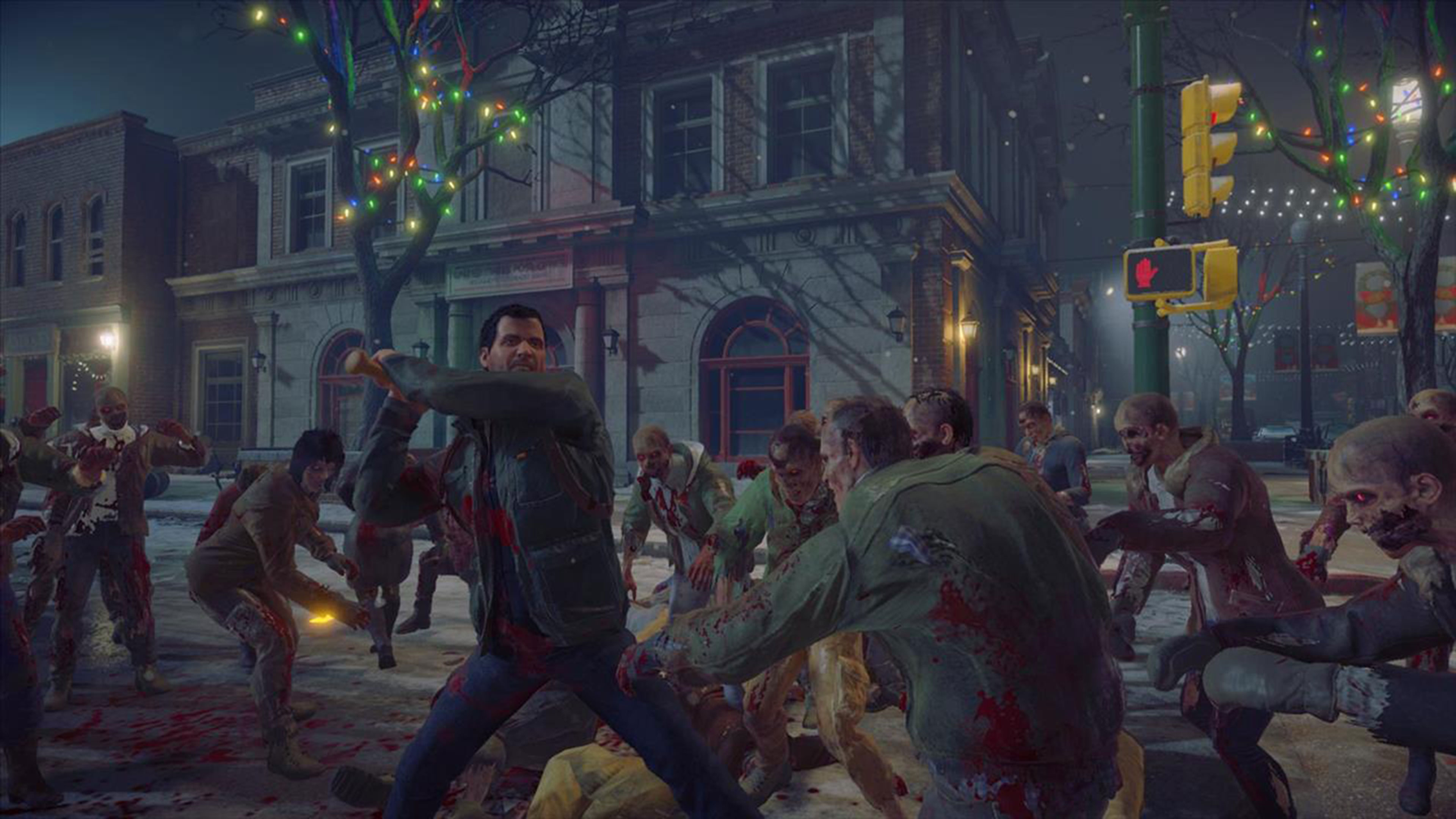
For a game that's all about mindless zombie murder, the storytelling is remarkably adept. Frank and Vick's relationship feels nuanced and believable. The central mystery consistently metes out new clues that keep the plot intriguing and the action meaningful. And though Frank isn't always likable, he's frequently relatable and entertaining, spouting goofy, smart-assed quips at every opportunity. There's also a coherent personality that binds every aspect of the experience together. From the dark, satirical humor of the collectible journals to the jaunty holiday music that plays over the pause screen, Dead Rising's juxtaposition of slaughter and silliness makes for a memorable world.
The gameplay, on the other hand, is a bit more mixed. Fundamentally, the core combat has evolved less than any other facet of the series. Though Frank uses a mix of melee, ranged, and throwable weapons, you're going to spend most of your time just mashing the X button to whack whatever's in front of you. It's serviceable, even satisfying in its cathartic brutality, but it's also rudimentary, offering little depth or challenge.
In fact, Dead Rising 4 is rarely challenging in any way, and there's no way to select a higher difficulty level. I always had plenty of health and weapons, and armed enemy soldiers seemed nearly as braindead as the undead. The new super-agile Evo zombies are definitely harder to put down, but of the 14,000-plus zombies I killed, only 71 were Evos. Honestly, the hardest part of Dead Rising 4 is trying to pick a specific item up when it's situated too near a pile of other objects.
While greater mechanical depth could have made Dead Rising 4 a more intense and rewarding game, I can mostly forgive its one-note combat for two big reasons. First, the deep and hilarious supply of outrageous combo weapons. There are now more than 50 in total, and once you've obtained a blueprint and the requisite materials, you can craft your new death-dealer on the fly rather than dragging everything to a workbench like Dead Rising 2.
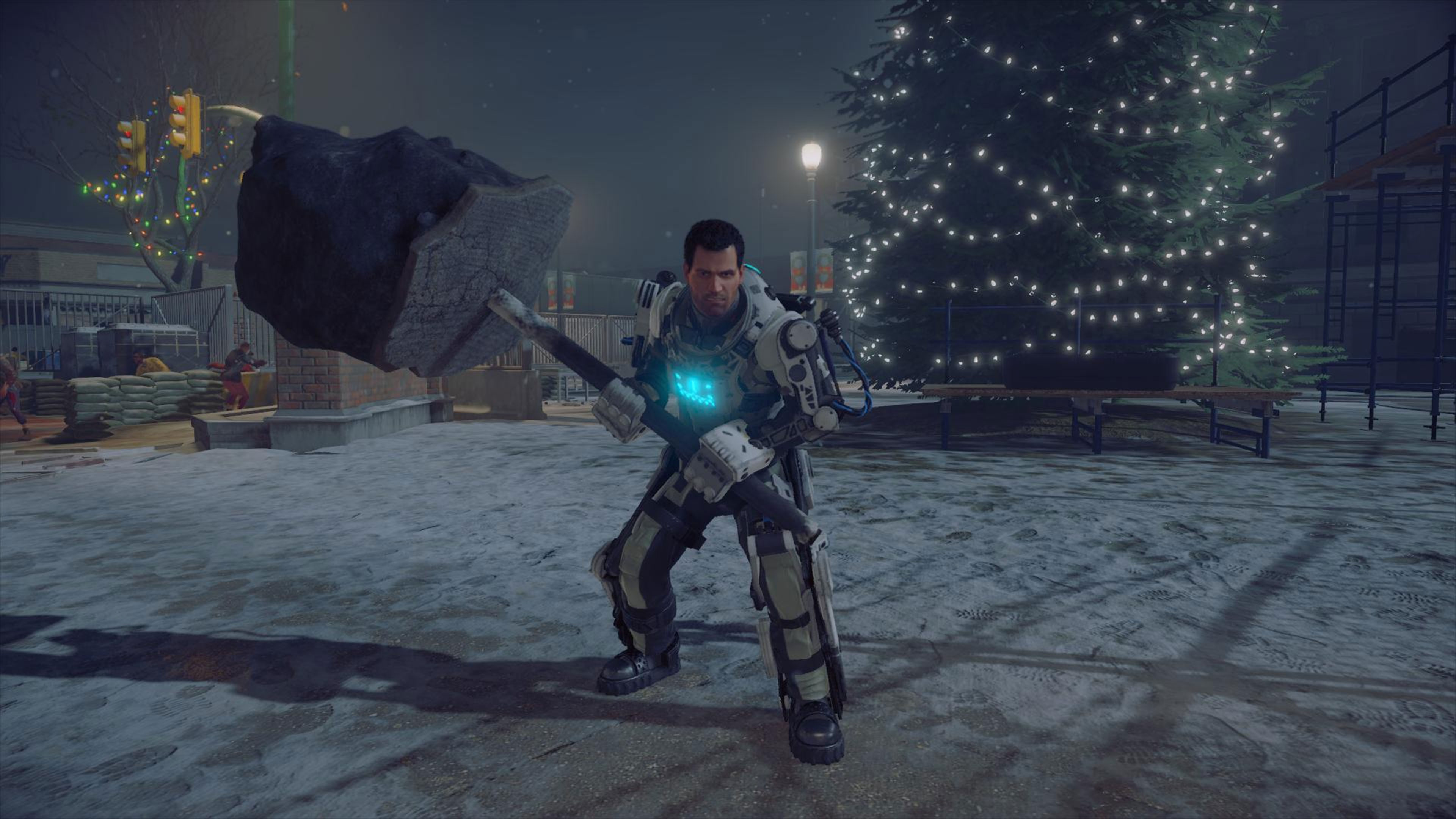
Whether you've created an electrified axe or a toy Santa that spits acid, new combo weapons consistently provide fleeting bursts of concentrated joy. And though not technically a combo weapon, the new Exo suit--a mechanical exoskeleton that turns Frank into a robotic superhuman--provides several hilarious ways to send zombies screaming into oblivion. Suits are scattered sparingly across the map and they lose power pretty quickly, but they're a blast while they last. The game may not challenge your skills, but it certainly rewards your curiosity.
There's also plenty to do outside of combat. Unlike the original and its immediate sequel, Dead Rising 4's campaign doesn't have a timer, and while that erodes the series' identity to a degree, it allows the open world and all its activities to breathe. The central mall and its surrounding areas are packed with hidden secrets, interesting weapons, and compelling collectibles. Obtaining combo weapon blueprints frequently forces exploration and puzzle-solving, which can be frustrating but also satisfying. You can also seek out "maniacs"--special side bosses that aren't quite as memorable as previous games' "psychopaths" but can nonetheless hit you with an amusing curveball. Along the way, you might also discover survivors that need rescuing--though thankfully you'll never have to escort anyone to a safehouse.
And of course, Frank's packing his trademark camera, so photography returns as an optional method for accruing experience and Achievements--and the progression system, though perfunctory, does give the campaign a sense of forward momentum. Frank's camera also plays a crucial role in the Arkham-esque investigation sequences that periodically pop up during the campaign. The process of saving your photos isn't particularly well explained upfront, but having a metagame that's always available can turn even random exploration into a worthwhile endeavor.
In defiance of the two most recent Dead Rising games, co-op has been removed from the campaign and funneled into a separate multiplayer mode. The pacing and narrative scaffolding of the campaign work well without a partner, but the new mode doesn't offer much consolation for co-op fans. Basically, you and your squad spawn in a slice of the world, complete a series of objectives selected from a small, preset pool, then head for a randomly designated safe zone. It's enjoyable enough, but the unimaginative structure and lack of distinct gameplay ideas make the mode feel like an afterthought. You can, at least, find continued enjoyment in the campaign by starting again with all your blueprints and skill unlocks intact once you've completed your first playthrough.
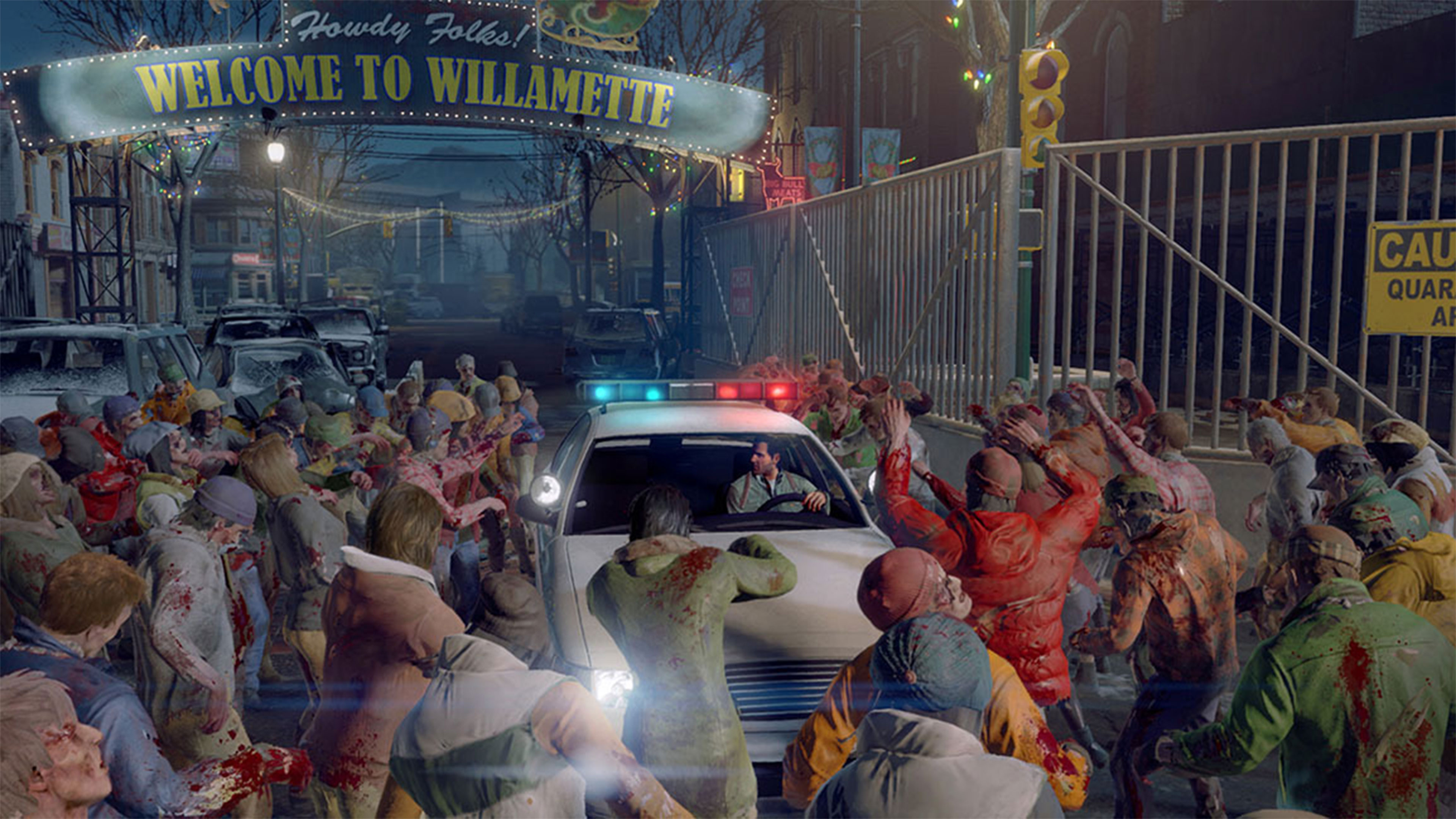
Regardless of what you choose to play, Dead Rising 4's tech holds up well--for the most part. I noticed a few zombies trapped in objects with just their arms poking out of, say, a giant rock, but the framerate never slowed noticeably, which is quite a feat considering how zombies could populate the screen at once.
Dead Rising's zombie-slaughtering formula has started to wear a bit thin after all these years, especially since its combat remains largely routine. The surprisingly well-crafted story, wild new combo weapons, and expansive open world elements, however, turn Dead Rising 4 into an over-the-top piece of popcorn entertainment that captures the series' best elements.

